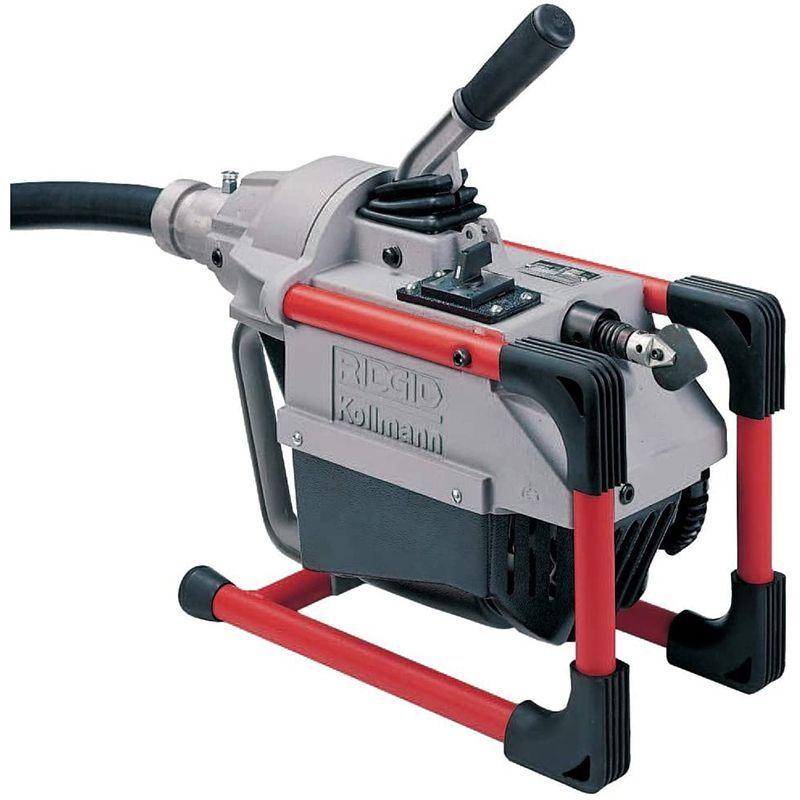Whether you’re a plumbing pro, a casual DIYer, or just someone who lives in a house with a toilet and tub, you have likely had to deal with at least a few clogged drains over the years. For times when the clog is farther down the drain beyond the trap or when plunging proves unsuccessful, the tool you’ll turn to—or wish you had—is a drain snake, which is the go-to solution for the most common plumbing issues, such as hair clogs and excess toilet paper.
Drain snakes are also called augers or plumbing snakes. For common, simple household usage, a basic handheld toilet auger or manual drain snake would likely suffice. If you are using the drain snake professionally or for a high-volume, multi-unit property, however, you will need something more substantial that is capable of handling bigger, more-demanding jobs.
We’ve used a variety of drain snakes both professionally and in our own homes, and while there’s nothing glamorous about these tools, they can truly be a lifesaver when a clogged drain needs to be cleared ASAP.

How a Drain Snake Works
To clear a clog, you insert a drain snake or auger into the drain or toilet until it comes into contact with whatever is creating the blockage. The snake or auger then dislodges the blockage or chops up the culprit so that the clog can safely continue down the drain.
What to Consider
To simply remove clumps of hair from a sink or tub, a basic no-frills manual auger of six feet or less in length is usually fine. For tougher jobs—such as those involving grease, thick clogs, or debris farther into the drain or those requiring a longer cable of more than six feet—a motorized machine is a better choice because it provides more power and will likely resolve the issue more quickly and efficiently. Although a manual option requires more physical exertion to operate, it may be a smart choice for those who are inexperienced with snakes and augers, as there are fewer things that could go wrong, such as getting the snake stuck, and less likelihood of accidentally damaging something, such as scratching the porcelain or damaging pipes.
Note that many snakes and augers are intended for drains (in sinks and showers) and not for toilets. For toilet clogs, choose a snake or auger specifically designed to navigate the trap of a toilet. We always recommend reading the manufacturer’s directions first and, if available, watching any provided instructional videos on how to use a snake or auger, especially if you are unfamiliar with it or have never used one.
How We Evaluated
As someone who previously co-owned a construction and maintenance business, and who also owns an old house in a rural area—which means plumbing and sewer issues are a routine part of daily life—I’ve had plenty of experience with drain snakes over the years. In assessing a wide variety of drain snakes, I zeroed in on four basic criteria: cable size, manual vs. motorized, recommend uses, and head type.
For an average homeowner, cable length and thickness can be on the relatively smaller side: 2 inches or less in diameter and less than 25 feet in length (although many household augers are considerably shorter—6 feet or less—which makes them more manageable while still sufficiently addressing many common home plumbing issues such as simple clogs). However, if you live in a home with old sewer pipes prone to clogs, you may want to go with a longer length so the drain can access clogs located farther into the sewer pipe.
We also noted the situations each drain snake would best handle and whether the tool is operated manually or with a motor. Lastly, we considered the type of head the snake has. Smaller drain snakes for common household use are more likely to have toothed, coiled, or bulb (spiral) heads, which are effective at removing hair and clearing small clogs, while a cutter head may help with bigger, more challenging tasks such as clearing debris and solid blockages from sewer pipes.
